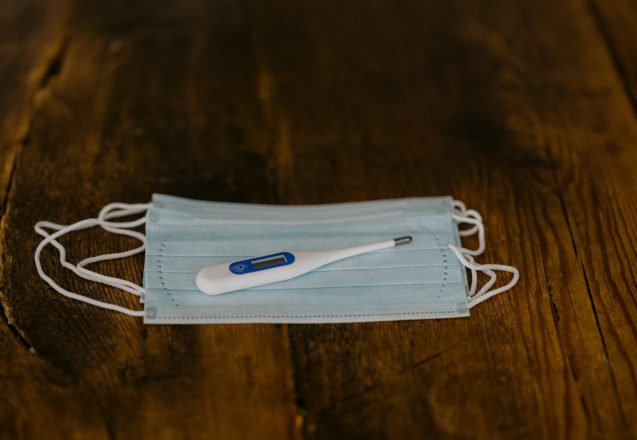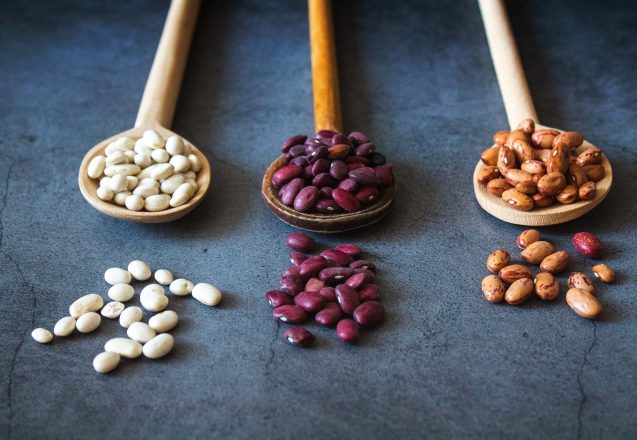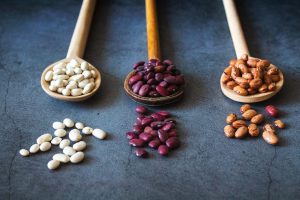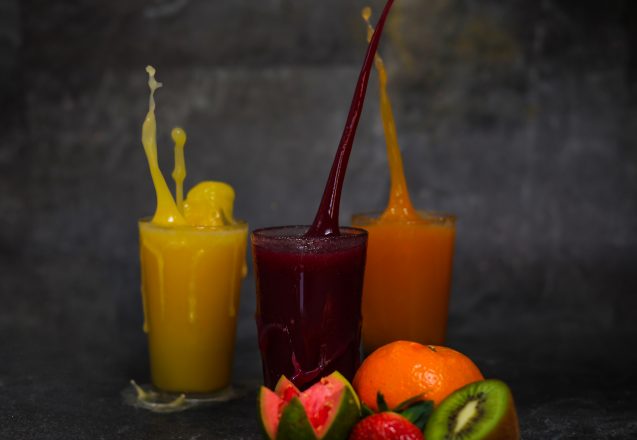Staying Healthy During A Crisis
 Whether you have your own personal crisis in Irvine, CA, or a nationwide crisis like the pandemic, one thing is certain, staying healthy will help you navigate the pitfalls more successfully. Some common effects on stress include chest pain, stomach problems, headache, fatigue and a lowered immune system. It can cause lack of motivation, restlessness, anxiety or depression and lead to heavy alcohol or drug misuse, social isolation or even overeating. You can see why avoiding stress is part of staying healthy.
Whether you have your own personal crisis in Irvine, CA, or a nationwide crisis like the pandemic, one thing is certain, staying healthy will help you navigate the pitfalls more successfully. Some common effects on stress include chest pain, stomach problems, headache, fatigue and a lowered immune system. It can cause lack of motivation, restlessness, anxiety or depression and lead to heavy alcohol or drug misuse, social isolation or even overeating. You can see why avoiding stress is part of staying healthy.
Exercise will help keep you healthy and deal with stress.
You don’t have to exercise a long time, just work out long, just a half hour a day or two and a half hours a week. It can be as simple as a brisk walk. If you want to be more vigorous, such as a high intensity interval training session, a vigorous workout at the gym, jogging or swimming laps, you can cut that amount of weekly time in half and still get the benefits of the workout. Exercising regularly lowers the risk of heart disease, helps you shed unwanted pounds, reduces the risk of diabetes by aiding in blood sugar management, strengthens bones and muscles, improves your mind and your mood and helps lower the risk of cancer.
During a crisis, keep your immune system in good repair with a healthy diet.
You can start by increasing the amount of fresh fruits and vegetables in your diet and eliminating processed food or food with added sugar. You don’t have to spend a lot of money if fresh veggies and fruit aren’t in your budget, frozen ones are just as good and sometimes even have more nutrients because they’re picked at their ripest and immediately frozen. Have a meatless Monday and get plenty of fiber in the process. Rice and beans provide all the protein you need and can help keep the budget in line.
Take time to relax and rest your brain.
One of the hardest things to do is tame your brain during a time of crisis, but it’s also one of the most important things to do at that time. Learn deep breathing techniques, meditation or other relaxation techniques and make time to practice at least once a day. An attitude of gratitude is also important, not just for your mental health, but also for your physical health. Taking an inventory of all the good in your life, will help put the crisis in perspective.
- Getting adequate sleep can help you function better in a crisis and is good for your health. If you have problems sleeping, consider working out regularly. It’s known to help people with insomnia.
- Being social may not seem possible, but it is. It doesn’t mean you go out on the town, just keep in touch with dear friends and family. Spend a few minutes a day talking via phone or in person can be just the medicine you need.
- Stay hydrated. Make it a habit to carry a bottle of water with you and sip on it throughout the day. It’s even more important in the winter, when the air inside is dry. You’ll be amazed at how water can perk you up more than a cup of coffee.
- Don’t panic. Help keep yourself in line with a schedule that you stick with throughout the crisis. Some routines should stay in place. Get up and go to bed at the same time each day. Eat meals, exercise and practice the same hygiene. Having a sense of order in your life helps you stay calm in a crisis.
For more information, contact us today at Next Level Fitness



 You may know that a healthy breakfast will get you off to a good start, but taking the time to make it doesn’t quite fit in your schedule. Well here’s a great idea. Make those breakfasts ahead and even eat them on the run. It’s time to bypass that donut and get some healthy meals to start the day, without taking a lot of time for preparation. Here are some easy breakfast sandwiches you can freeze and eat later. Just prep them on the weekend and enjoy them the entire week.
You may know that a healthy breakfast will get you off to a good start, but taking the time to make it doesn’t quite fit in your schedule. Well here’s a great idea. Make those breakfasts ahead and even eat them on the run. It’s time to bypass that donut and get some healthy meals to start the day, without taking a lot of time for preparation. Here are some easy breakfast sandwiches you can freeze and eat later. Just prep them on the weekend and enjoy them the entire week.
 What is your BMI—body mass index? It’s just one measure of your health. It uses both height and weight to calculate a number that is used with a chart to predict your overall health and whether you’re underweight or overweight. It replaced those charts that used to show the ideal weight and gave a better picture of your overall health that’s expressed with just one number. For example, if you’re a woman who is 5’6″ and you weighed 120 pounds, you’d be on the low end of normal. If you lost six pounds, you’d be underweight. You’d have to gain 35 pounds to inch your way into overweight. There are several online BMI calculators that you can use.
What is your BMI—body mass index? It’s just one measure of your health. It uses both height and weight to calculate a number that is used with a chart to predict your overall health and whether you’re underweight or overweight. It replaced those charts that used to show the ideal weight and gave a better picture of your overall health that’s expressed with just one number. For example, if you’re a woman who is 5’6″ and you weighed 120 pounds, you’d be on the low end of normal. If you lost six pounds, you’d be underweight. You’d have to gain 35 pounds to inch your way into overweight. There are several online BMI calculators that you can use.
 What does the food you put in your mouth have to do with your brain and mood? It seems there are nutrition and mental health connections that scientists are now starting to investigate. These studies are deemed nutritional psychiatry. It only makes sense that if a chemical can alter behavior, via a pill, then why wouldn’t the chemicals in some foods do the same? Just like any other organ of the body, the brain needs fuel and it’s now more apparent that the right fuel can help improve your overall health.
What does the food you put in your mouth have to do with your brain and mood? It seems there are nutrition and mental health connections that scientists are now starting to investigate. These studies are deemed nutritional psychiatry. It only makes sense that if a chemical can alter behavior, via a pill, then why wouldn’t the chemicals in some foods do the same? Just like any other organ of the body, the brain needs fuel and it’s now more apparent that the right fuel can help improve your overall health.
 When you hear about people eating beans, do you envision a lone cowpoke, sitting by the campfire, a destitute person, scraping the bottom of the can for just a little more to eat or a grand dinner with beans as its main entry. Most people don’t envision the last one. That’s because beans are so inexpensive and also a good reason to add them to your diet, particularly if you’re suffering from diabetes. Not only are they packed with protein, they also contain many other nutrients necessary for good health.
When you hear about people eating beans, do you envision a lone cowpoke, sitting by the campfire, a destitute person, scraping the bottom of the can for just a little more to eat or a grand dinner with beans as its main entry. Most people don’t envision the last one. That’s because beans are so inexpensive and also a good reason to add them to your diet, particularly if you’re suffering from diabetes. Not only are they packed with protein, they also contain many other nutrients necessary for good health.
 I get confessions from a lot of clients in Irvine, CA, about their addiction to chocolate. Some hide it in secret places in their home, like the freezer or the sock drawer. If you’re a secret chocolate chomper, there’s good news. Dark chocolate is actually healthy. There are limitations. Don’t get a share size dark chocolate candy bar and eat it all yourself…or any large candy bar, for that matter. There are also only certain types of chocolate that are healthy. The serving size should be between 30 and 60 grams a day. Since each dark chocolate Hershey’s mini bar weighs about 8.6 grams, that’s about 5 a day.
I get confessions from a lot of clients in Irvine, CA, about their addiction to chocolate. Some hide it in secret places in their home, like the freezer or the sock drawer. If you’re a secret chocolate chomper, there’s good news. Dark chocolate is actually healthy. There are limitations. Don’t get a share size dark chocolate candy bar and eat it all yourself…or any large candy bar, for that matter. There are also only certain types of chocolate that are healthy. The serving size should be between 30 and 60 grams a day. Since each dark chocolate Hershey’s mini bar weighs about 8.6 grams, that’s about 5 a day.
 If you want to lose weight, start adding herbs to your diet. You don’t have to spend a fortune at the health food store, just go to the market and get fresh or dried herbs to add both flavor and nutrients—without a lot of calories—to your next meal. Some herbs do more than just add nutrition and flavor, although that still makes using them a good idea. Some speed up weight loss. They help you lose weight in a number of different ways.
If you want to lose weight, start adding herbs to your diet. You don’t have to spend a fortune at the health food store, just go to the market and get fresh or dried herbs to add both flavor and nutrients—without a lot of calories—to your next meal. Some herbs do more than just add nutrition and flavor, although that still makes using them a good idea. Some speed up weight loss. They help you lose weight in a number of different ways.
 If you’re trying to live a healthier lifestyle, you might consider dropping all sugary drinks in favor of fruit juice. However, there are some reasons and situations where fruit juice is bad for you. Fruit juice does have natural sugars, just like their fruit counterparts. Drinking too much will provide an overload of sugar without any of the benefits you get from the whole fruit.
If you’re trying to live a healthier lifestyle, you might consider dropping all sugary drinks in favor of fruit juice. However, there are some reasons and situations where fruit juice is bad for you. Fruit juice does have natural sugars, just like their fruit counterparts. Drinking too much will provide an overload of sugar without any of the benefits you get from the whole fruit.
 You may have read on the internet or heard about it at your favorite coffee shop in Irvine, CA. There’s a lot of talk about all the benefits of rosemary water. Just what is rosemary and why is it praised? Rosemary is an evergreen herb that lives two years. It’s extremely fragrant and often used to season Mediterranean dishes. While it looks like a small shrub, it’s actually a member of the mint family and shares family ties to basil, thyme, oregano and lavender, other herbs often used for health and flavor benefits.
You may have read on the internet or heard about it at your favorite coffee shop in Irvine, CA. There’s a lot of talk about all the benefits of rosemary water. Just what is rosemary and why is it praised? Rosemary is an evergreen herb that lives two years. It’s extremely fragrant and often used to season Mediterranean dishes. While it looks like a small shrub, it’s actually a member of the mint family and shares family ties to basil, thyme, oregano and lavender, other herbs often used for health and flavor benefits.
 There’s an old adage that you can get too much of a good thing. That holds true for many things, including important nutrients, such as potassium. You can get too much potassium and the results can be dangerous. Potassium is a necessary mineral that functions as an electrolyte, too. It helps maintain the body by making muscles work, which includes the heart and breathing muscles. Normally, if you have excess potassium, it’s removed from the blood via the kidneys.
There’s an old adage that you can get too much of a good thing. That holds true for many things, including important nutrients, such as potassium. You can get too much potassium and the results can be dangerous. Potassium is a necessary mineral that functions as an electrolyte, too. It helps maintain the body by making muscles work, which includes the heart and breathing muscles. Normally, if you have excess potassium, it’s removed from the blood via the kidneys.